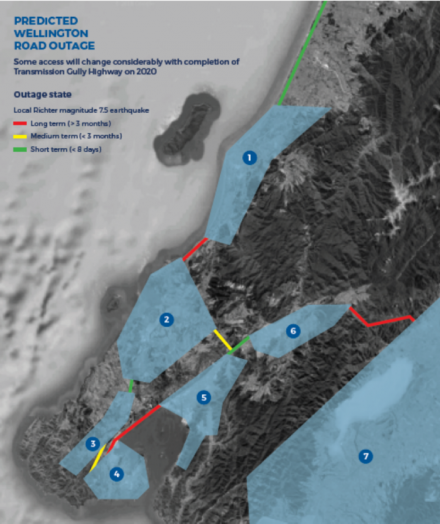Everyday heroes wanted for quake readiness program
The ground shakes - it's a big one. After you drop, cover and hold, you dust yourself off, attend to any immediate emergency, and venture out. What happened? To whom? And where do you go if you need or can offer help?
Since the Christchurch earthquakes of 2011, when locals cooperated to help themselves, their neighbours and their communities, Wellington's Community Emergency Hub initiative has been quietly revolutionising our region's approach to earthquake readiness and response. Community Emergency Hubs (formerly known as Civil Defence Centres) are now pre-identified places for community members to coordinate to help each other during and after a disaster. Why?
The Hub initiative recognises that in a major disaster the demands of communities will exceed the capabilities of the emergency services. Communities will likely be isolated for up to a week. Indeed, recent research suggests the Wellington Region could be broken up into seven "islands" in the event of a magnitude 7.5 (or greater) quake along the Wellington fault.
Roads could be extensively damaged, cutting off northern and western Wellington suburbs from central, eastern and southern suburbs. Tawa-Porirua, Kāpiti, Lower Hutt, Upper Hutt and Wairarapa could also be separated. Access by road - and to medical care, the water supply and power - could be restricted.
The following map show how parts of the region could be severed due to landslips, road surface fractures, bridge destruction or large building debris blockages and the "seven islands" within the Wellington Region could be created.

Community Emergency Hubs are an initiative led by the Wellington Regional Emergency Management Office (WREMO), funded by the Greater Wellington Regional Council (GWRC) and the eight other councils in the region.
Hubs can be found in local primary schools, community centres and other gathering spaces in the community. WREMO has made arrangements with the owners of these buildings for locals to open up the venue in times of need to help coordinate their community's response.
The Hubs are equipped with an operating guide that identifies local resources and vulnerabilities, a map, a small amount of stationery to assist in coordinating whatever the community feels should be done, and a radio so the community can communicate with the official response - the local Emergency Operations Centre.
There are no caches of emergency supplies at Community Emergency Hubs. Much of the work to identify resources for Community Emergency Hubs has already been done and continues through planning sessions held in each suburb. This information is available online.
Educating and creating awareness is the focus of the GW's Together, Stronger campaign. It features the community of Te Horo, their Community Emergency Hub and "Hub champions" to inspire other everyday heroes to organise and prepare for what could be a devastating natural disaster.
Remember: you are not alone, your community will be there with you.
Find out more about your local Community Emergency Hub, and how you and your community can get through:
Get in touch
- Phone:
- 0800 496 734
- Email:
- info@gw.govt.nz
